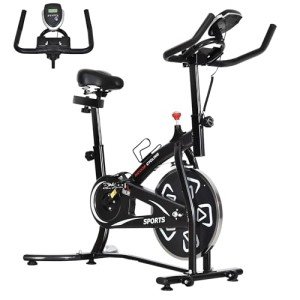The Rise of Stationary Bikes: A Comprehensive Guide
In recent years, stationary bicycles have actually risen in popularity, becoming a staple in homes, gyms, and fitness studios. Their benefit, versatility, and effectiveness in supplying an outstanding cardiovascular workout make them an appealing option for fitness enthusiasts of all levels. This post checks out the types, benefits, functions, and factors to consider concerning stationary bicycles, ensuring you have all the info you need to make an informed choice on this necessary fitness equipment.
Kinds Of Stationary Bikes
Before purchasing a stationary bike, it's necessary to understand the different types offered, each accommodating varying fitness goals and preferences.
1. Upright Bikes
Upright bikes look like standard bicycles and appropriate for a more intense workout. Riders being in an upright position, engaging their core and leg muscles.
2. Recumbent Bikes
These bikes feature a reclined seating position that provides higher back assistance. They are perfect for those with back problems or individuals looking for a more comfy pedaling experience.
3. Spin Bikes
Developed for cycling lovers, spin bikes use a more extreme workout experience, often found in group classes. They feature a heavy flywheel and adjustable resistance, allowing for an energetic workout.
4. Folding Bikes
For those with minimal space, folding bikes offer a compact solution. They can be easily kept away when not in use, making them ideal for house residents or occasional users.
5. Smart Bikes
Leveraging innovation, smart bikes link to apps or virtual cycling platforms, using interactive workouts, live classes, and efficiency tracking.
Advantages of Stationary Bikes
Purchasing a stationary bike offers many fitness and health benefits. Here are some reasons why one may think about adding this piece of equipment to their routine:
1. Cardiovascular Health
Routine cycling can successfully improve cardiovascular fitness, assisting to enhance the heart, boost lung capability, and improve blood circulation.
2. Weight-loss
Stationary biking can assist in burning calories and shed excess weight. Depending on the intensity, a person can burn in between 400 and 600 calories in an hour.
3. Low Impact
Cycling is low-impact, making it ideal for people with joint issues or those undergoing rehabilitation. It enables a safe workout without putting undue tension on the joints.
4. Strengthening Muscles
Cycling works different muscle groups, particularly the legs, glutes, and core. With time, it improves muscle tone and strength.
5. Versatility and Balance
Regular usage of a stationary bike can improve overall flexibility and balance as it motivates better posture and core engagement.
6. Practical and Flexible
Among the best advantages of stationary bicycles is the ability to work out on your schedule. There's no requirement to commute to a gym; you can ride in the house, at any time of day.
Features to Consider When Choosing a Stationary Bike
When picking a stationary bike, several key functions need to be taken into account to guarantee you get the very best value and performance for your needs.
1. Adjustable Resistance
Purchase a bike with adjustable resistance levels. Buy Exercise Bikes Online enables you to personalize your workout strength as you progress in your fitness journey.
2. Ergonomic Design
Select a bike that offers adjustable seat height and position to maintain convenience throughout exercises. An ergonomic design decreases the threat of injury.
3. Home entertainment Options
Consider bikes with built-in speakers or compatibility with music devices. This feature can help make workouts more satisfying, particularly throughout longer sessions.
4. Show Console
A great screen console tracks vital metrics such as time, range, speed, and calories burned. Some advanced models might likewise keep track of heart rate and sync with fitness apps.
5. Price and Warranty
Stationary bicycles come in a series of costs. Set a budget plan and look for designs that offer a service warranty, ensuring you are covered in case of mechanical problems.
FAQs About Stationary Bikes
Q1: How often should I utilize a stationary bike for optimal results?
A1: For optimum fitness outcomes, objective for at least 150 minutes of moderate-intensity cycling weekly. This equates to about 20-30 minutes per session, five days a week.
Q2: Can stationary bikes assist develop muscle?
A2: Yes, while stationary bikes are mostly used for cardiovascular exercises, they can likewise assist tone and strengthen the legs and core muscles, especially with increased resistance.
Q3: Are stationary bikes suitable for newbies?
A3: Absolutely! Stationary bicycles can accommodate various fitness levels, with adjustable resistance settings and comfy seating alternatives that make them beginner-friendly.
Q4: Do I require a special type of bike for indoor cycling classes?
A4: While basic stationary bicycles can be utilized for indoor cycling classes, spin bikes are normally preferred for their heavier flywheels and greater levels of resistance.
Q5: How can I make the most of my stationary bicycle workouts?
A5: To maximize your results, think about blending various workout regimens, such as interval training, steady-state rides, and strength-focused cycling sessions.
Stationary bikes are an outstanding addition to anybody's fitness regimen. They supply a versatile, efficient, and low-impact method to improve cardiovascular health, strengthen muscles, and help in weight management. With numerous types and functions offered, it's vital to examine private needs, choices, and spending plan before buying. Eventually, integrating a stationary bicycle into your regimen can be a considerable action towards a much healthier, more active lifestyle.

